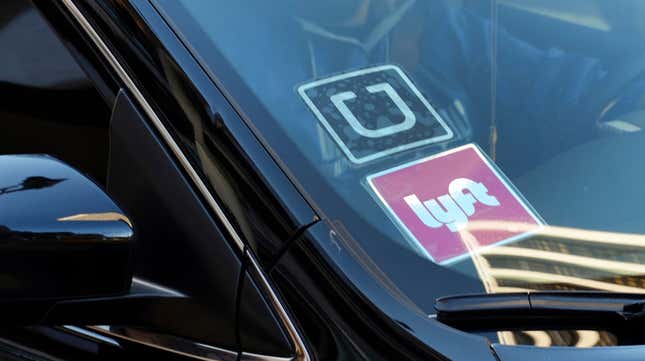
If you live in California, chances are you could be taking many more Uber and Lyft trips in electric vehicles in the coming years. The state’s clean air agency is poised to mandate that nearly all vehicles used by drivers working for ridesharing companies be electric by 2030.
The proposal from the California Air Resources Board, announced at the end of last month and set to be decided on next month, would slowly ratchet up mileage standards for ridesharing companies by mandating a certain number of yearly miles traveled be with electric vehicles. The requirements would begin by requiring 2% of all yearly miles driven by ridesharing companies be in electric vehicles in 2023, rising to 30% in 2026, then 50% by 2027, and arriving at 90% by 2030. This represents a step up from last year when CARB considered mandating that 60% of rideshare miles traveled be electric by 2030.
CARB found that in 2018, rideshare vehicles like Uber and Lyft made up 1% of the state’s total emissions from passenger vehicles on the road that year. That may not sound like much, but cars are a pretty big deal in California. Passenger vehicles make up a whopping third of the state’s total emissions, ahead of other big emitting sectors like livestock and electric plants. The move to regulate rideshare emissions is just part of a bigger push from the state to get a handle on its vehicle emissions. In September, Governor Gavin Newsom issued an executive order to get all vehicles sold in-state to be electric by 2035, which is estimated to reduce the state’s overall emissions by 35%. Pretty big moves!
While ridesharing companies have in the past promoted the carpooling options provided by services like Uber Pool as an environmentally friendly option, a study conducted last year by the Union of Concerned Scientists found that Uber and Lyft trips created almost 70% more emissions than the rides they displaced. The study calculated a solo trip in a ridesharing car created on average 50% more emissions than if the person had just used their own car, mostly due to the rideshare vehicle driving to and fro without a passenger before and after the trip. Meanwhile, those pool rides that ridesharing companies said were greener options actually generated around the same amount of emissions as a normal car ride. And with the pandemic temporarily halting pooling options, it’s likely that when people do use Uber or Lyft most won’t be opting for group rides in the near future—meaning we’re even more likely to take those emissions-heavy solo rides.
Perhaps sensing the oncoming electric vehicle revolution—and maybe also a chance for some good PR given a rough few years of less-than-flattering press—Uber and Lyft have both made big electric promises of their own. Both companies said last year all rides across the country by 2030 would be 100% electric. But Lyft has also claimed to be carbon neutral because it buys offsets, and both have fought other regulations.
Another thing that regulators may need to watch out for, especially given rideshare companies’ history of cutting corners and mistreating drivers, is how these companies are choosing to roll out their new electric vehicle fleets, especially how it incentivizes drivers—and if it will do so fairly. The CARB report admits that the agency “[does] not know the exact strategies TNCs [transportation network companies] will use, nor how the TNC business models may evolve in the future.”
But the agency said that it hoped the lower targets in the early years would help the companies help drivers, especially in lower-income areas, acquire electric vehicles. Meanwhile, Bloomberg Green reported last month that Uber was missing payments it had promised drivers as incentives to switch over to electric vehicles. As we’ve seen from ridesharing companies before, making promises is easy—it’s following through on those promises that’s tricky.